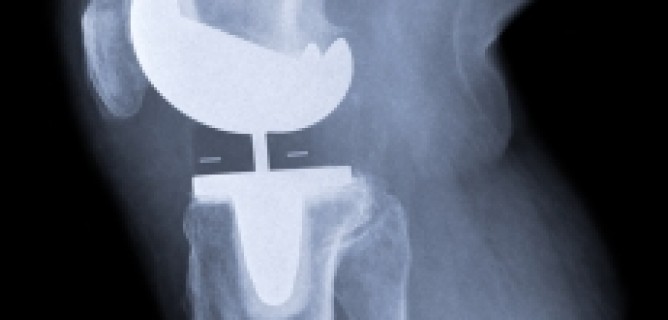By Annette “Dr. Z” Zaharoff, M.D.
On our clinic’s Facebook page (Facebook.com/DrZaharoff) we recently posted an item that came to our attention thanks to our friends at The Orthobiologic Institute. The post is about news from The Ohio State University Wexner Medical Center about a new implant device for knees designed to help ease the pain of those suffering from osteoarthritis.
According to the Wexner Medical Center, “Without altering the anatomy or removing tissues or bone from the knee itself, the implant absorbs excess knee loads that cause pain in osteoarthritic joints.”
In addition to addressing pain, the implant could help delay or prevent the need for knee replacement surgery. This procedure is still in the early stages of approval, but could prove to be a promising option to total knee replacement surgery.
This Facebook post received the most shares and likes, and reached the most people organically, of anything we have put on our Facebook page in the past 12 months. It’s easy to understand why. The article addresses growing concerns among millions of American adults.
According to the American Academy of Orthopaedic Surgeons:
- Nearly half of all American adults develop knee osteoarthritis in at least one knee in their lifetime.
- By 2030, total knee replacement surgeries are projected to grow nearly 700 percent to 3.5 million procedures annually.
- Half of patients receiving knee replacements are under the age of 65, and most are working adults
- Nearly two out of three knee replacement operations in 2008 were performed on women.
These are incredibly sobering numbers .The average cost of a knee replacement operation exceeds $20,000. Do the math and you can see how this will be a major medical expense impacting millions of adults and our already overburdened health care system.
During surgery, an orthopedic surgeon carves away the damaged part of the knee and replaces it with an artificial joint, typically made of metal or plastic. The artificial joint is then attached to the thigh bone, shin, and kneecap with a special material such as acrylic cement. While the surgery may address the pain issue, but several studies show that patients with total knee replacements do not return to full functionality. They may have pain when kneeling, or be unable to run long distances, for example.
Yet many people suffering from knee osteoarthritis feel they have little recourse. Osteoarthritis can result in segments of bone breaking off and floating around the knee joint. Cartilage in the knee bone may wear away completely, with the often painful and traumatic result of bone rubbing against bone.
Which brings me to the options in regenerative medicine. I have long been a proponent of Prolotherapy, Platelet-Rich Plasma (PRP) and Stem Cell injections as viable options for patients dealing with a host of chronic joint pain issues, including knee osteoarthritis.
Prolotherapy, PRP injections and stem cell injections are being used daily around the world to help treat everything from sprained knees and tennis elbow to chronic tendonitis, osteoarthritis and acute ligament and muscle injuries. Many professional athletes including pro golfers like Tiger Woods, NBA superstars like Steph Curry and numerous Major League Baseball pitchers have turned to regenerative medicine injection treatments because of the track record of promoting speedy healing and recovery. PRP injections are an increasingly accepted alternative to surgery, and some orthopedic surgeons are using it specifically to speed up post-surgery recovery.
Regenerative medicine options may successfully address knee osteoarthritis with much less invasive, much less expensive procedures that can relieve pain, restore functionality and help people return to active living. I treated a patient over the age of 50 with a combination of Platelet-Rich Plasma (PRP) and Prolotherapy injections into a knee that had been through numerous injuries, including a torn meniscus and a complete tear of his anterior cruciate ligament (ACL). The treatment resulted in his return to playing competitive amateur baseball.
I look forward to sharing that story with you in our next issue. The promise of regenerative medicine is to help patients to have a better quality of life and improve their longevity, because they can get back to moving around and not having pain that inhibits them physically and emotionally. It is a passion of mine, and one that I hope gives more patients hope for moving on in life without the need for a function-limiting knee replacement surgery.
Dr. Annette “Dr. Z” Zaharoff heads the Non-Surgical Center of Texas, focusing on non-surgical treatments to relieve pain and repair injuries. A former professional tennis player who competed on the WTA circuit, Dr. Zaharoff has been utilizing regenerative injection treatments including Stem Cell Therapy, PRP Injection Therapy and Prolotherapy for more than a decade. Learn more about her at www.drzmd.com. You can follow her on Facebook at www.Facebook.com/DrZaharoff.

